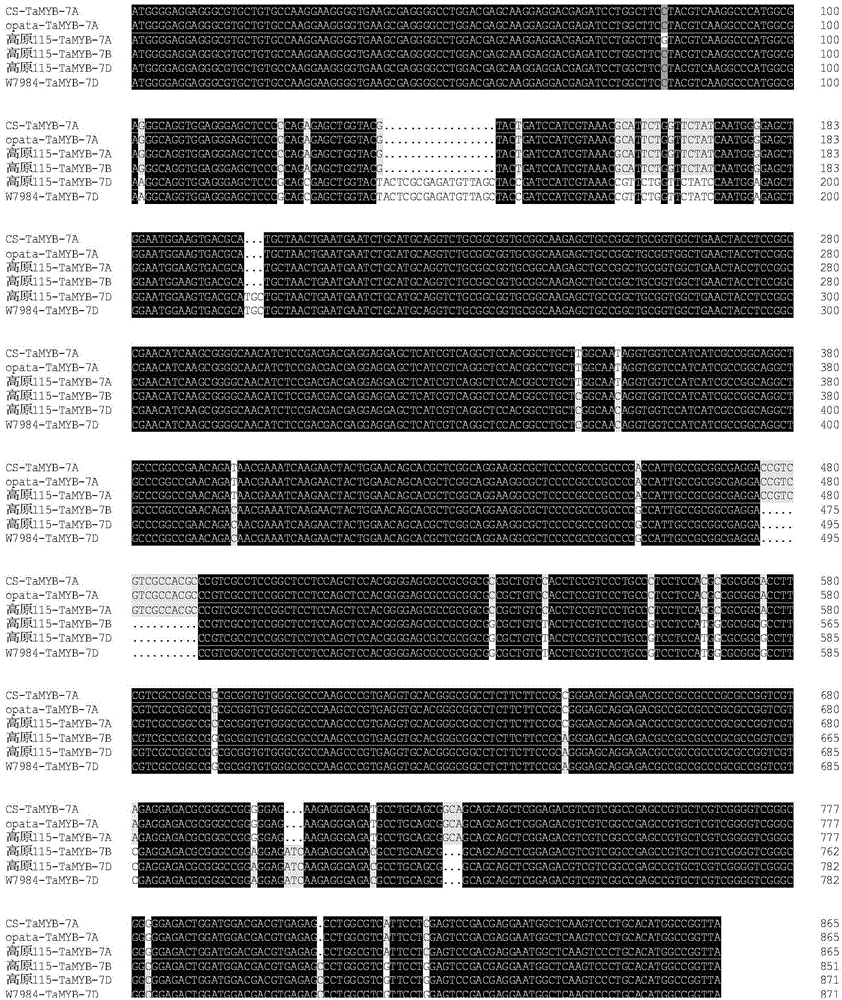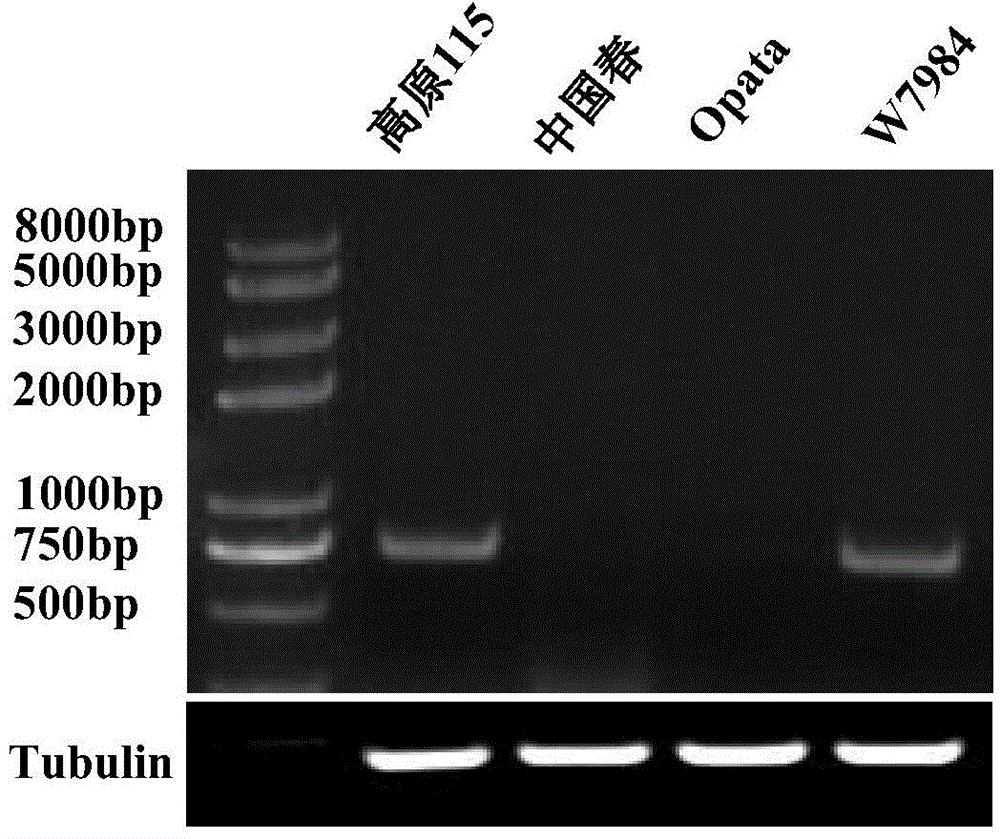Novel wheat gene TaMYB7D capable of adjusting and controlling synthesis and metabolism of anthocyanin
A kind of anthocyanin and gene technology, applied in the direction of genetic engineering, plant gene improvement, recombinant DNA technology, etc., can solve the problem of anthocyanin produced by grape embryogenic callus cells
- Summary
- Abstract
- Description
- Claims
- Application Information
AI Technical Summary
Problems solved by technology
Method used
Image
Examples
Embodiment 1
[0034] Example 1: Cloning of TaMYB7D gene
[0035] All experimental materials were purchased from Northwest Institute of Plateau Biology, Chinese Academy of Sciences. All samples for DNA and RNA extraction were quickly frozen in liquid nitrogen and stored in a -80 freezer after sampling. All nucleotide sequences were determined at Shenzhen Huada Gene Co., Ltd. DNA was extracted using the CTAB method (Murray and Thompson, 1980), and RNA was extracted using the improved Trizon method (Li and Trick, 2005). Plasmids were extracted using a kit from Beijing Biotech Co., Ltd. (China). Nucleotide and protein sequences were aligned using the software Vector NTI Advance 10.0 (http: / / www.invitrogen.com / ). The protein phylogenetic tree was constructed using the software MEGA 4.0 (http: / / www.megasoftware.net / ). The gene map was drawn using GSDS software (http: / / gsds.cbi.pku.edu.cn / help.php).
[0036] In the present invention, the MYB gene AtTT2 and ZmC1 sequences related to anthocyani...
Embodiment 2
[0040] Example 2: TaMYB7D bioinformatics analysis
[0041] The full-length CDS sequence of TaMYB7D is 759bp, encoding 252 amino acids ( Figure 4 ). There is a typical R2R3-MYB domain at its N-terminal, 3 tryptophan residues W are regularly distributed in the R2 domain, 2 tryptophan residues W are regularly distributed in the R3 domain, and at the same time in the R3 There is a non-identical D / ELx in the domain that interacts with bHLH protein 2 R / Kx 3 Lx 6 Lx 3 R structural element; a possible transcriptional activation region exists at the C-terminus. This suggests that TaMYB-7D may be a positive regulator of R2R3-MYB transcription factor.
[0042] The known and functionally verified MYB genes were selected for phylogenetic tree analysis, including snapdragon, Arabidopsis, pepper, carrot, strawberry, gerbera, tomato, apple, tobacco, petunia, grape, Phylogenetic tree of MYB transcription factors in maize and wheat ( Figure 5 ). On the phylogenetic tree, TaMYB-7D is cl...
Embodiment 3
[0044] Example 3: Subcellular localization of TaMYB3 protein
[0045] Using the pk7FWG2-R vector with GFP and 35S promoter, the TaMYB-7D gene was constructed on the pk7FWG2-R vector, and the constructed pk7FWG2-R-TaMYB-7D fusion expression vector was transformed into onion by gene gun transformation method Epidermal cells. The results showed that in the onion epidermal cells transformed with empty vector pk7FWG2-R, the green fluorescence excited by GFP expression was distributed throughout the onion epidermal cells; when the recombinant plasmid pk7FWG2-R-TaMYB-7D was transformed into the onion epidermal cells, only in Green fluorescence was observed on the nucleus and cell membrane ( Figure 7 ). This indicates that TaMYB-7D may localize to the cell membrane in addition to the nucleus.
PUM
 Login to View More
Login to View More Abstract
Description
Claims
Application Information
 Login to View More
Login to View More - R&D
- Intellectual Property
- Life Sciences
- Materials
- Tech Scout
- Unparalleled Data Quality
- Higher Quality Content
- 60% Fewer Hallucinations
Browse by: Latest US Patents, China's latest patents, Technical Efficacy Thesaurus, Application Domain, Technology Topic, Popular Technical Reports.
© 2025 PatSnap. All rights reserved.Legal|Privacy policy|Modern Slavery Act Transparency Statement|Sitemap|About US| Contact US: help@patsnap.com



